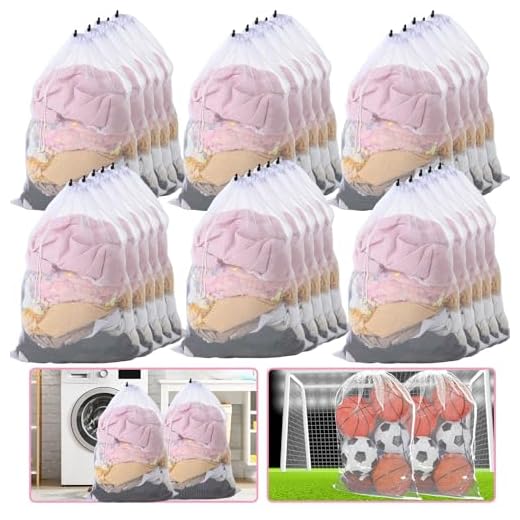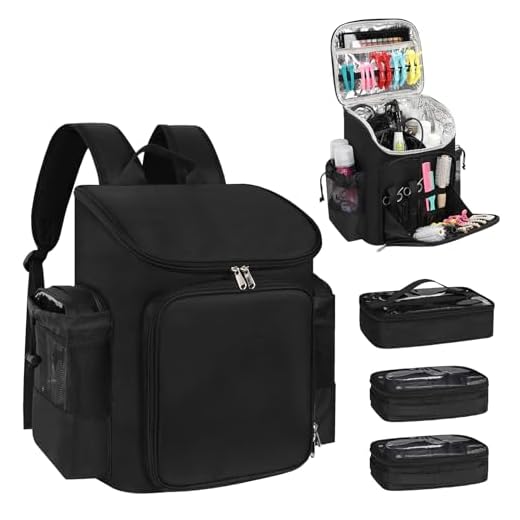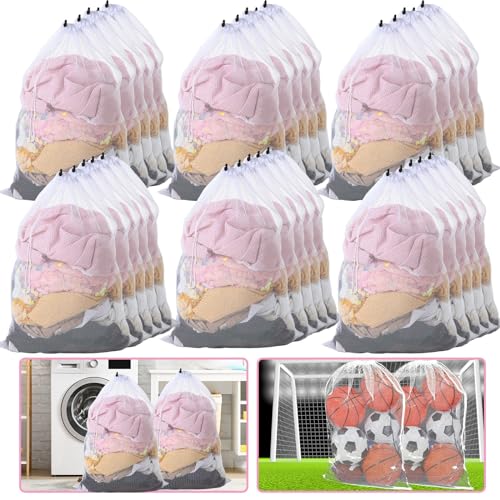



Immediate recommendation: avoid subjecting foam-padded daypacks to heated tumble cycles. Heat above 40°C (104°F) can deform internal foam, delaminate waterproof coatings such as PU or TPU, and warp plastic buckles. For synthetic shells (nylon, polyester) a cold-air or no-heat tumble for 10–15 minutes helps regain loft; total heated tumble time should stay under 20 minutes if unavoidable.
Before machine use: Empty all pockets, remove detachable hip-belt and internal frame sheet, unclip metal accessories, close zippers and fasten Velcro. Place pack inside a large mesh laundry bag or wrap in a towel to reduce abrasion. Balance load with towels to prevent imbalance. Use lowest RPM spin setting if using washer prior to drying.
Avoid machine use for leather trims, waxed canvas, suede, or glued seams; air-dry flat in shade with good airflow. Estimated air-dry times: 6–12 hours for lightweight daypacks in warm, low-humidity conditions; 12–24+ hours for loaded expedition packs or damp foam. Accelerated heat risks shrinkage, adhesive failure, coating crazing.
Check care label and warranty before any tumble; many manufacturers forbid mechanical heat. If repairable damage occurs after machine exposure, document with photos and contact manufacturer or retailer for guidance. Routine maintenance: spot-clean with mild detergent, allow full air-dry, reapply water-repellent treatment (PFC-free) after several washes to restore bead performance.
Safe drying for rucksacks and daypacks
Avoid tumble-drying a rucksack; choose air-dry or low-heat cycle only for synthetic fabrics such as nylon or polyester.
Nylon and polyester: tolerate low heat (max 40°C / 105°F) and gentle tumbling for short bursts. Cotton and canvas: prone to shrinkage and stiffness if exposed to heat above 40°C; prefer air-dry. Leather, suede, waxed canvas: do not expose to heat or machine tumbling; air-dry and treat with leather conditioner after drying. Foam padding, glued seams and welded reinforcements: adhesives can soften and delaminate above ~60°C / 140°F, avoid elevated temperatures. Plastic buckles and internal frames may warp when hot.
Preparation checklist: empty all pockets, unzip compartments, remove laptop sleeve, water reservoir and detachable straps or frames. Close zippers and fasten all hook-and-loop to prevent snagging. Shake out loose dirt and vacuum interior foam creases. Place small packs in a mesh laundry bag for machine washing; use mild detergent and cold water with a gentle spin.
Air-dry method: stuff main compartment with dry towels to preserve shape, hang in shaded, well-ventilated area, rotate position every few hours. Expected dry times: small daypacks 6–12 hours outdoors or 12–24 hours indoors; larger rucksacks 24–48 hours depending on humidity. Avoid direct sunlight for dyed fabrics to reduce fading.
Low-heat machine method (only for robust synthetic shells): use low-heat or air-fluff setting, 15–20 minute cycles, inspect after each cycle for heat damage, remove immediately when dry. If tumbling, include wool dryer balls to redistribute padding, but prevent straps from tangling with drum or heater elements.
If internal hydration reservoir present: disconnect, flush with cleaning solution, prop open to air-dry fully before reinsertion. If smell or stubborn stains persist, use specialized cleaning tablets or diluted baking soda rinse, then air-dry.
For long-term care: reapply fabric waterproofing or seam sealer after aggressive cleaning; replace worn straps or buckles before next trip. For recommendations on durable options suited for students, see best luggage for college boys.
Identify heat-safe fabrics and hardware on pack
Remove metal frames and detachable hardware before starting any tumble cycle; exposed metal may rust, bend, or scratch drum surfaces.
Inspect care label inside bag for tumble symbols: circle inside square with one dot = low heat; two dots = medium; crossed circle = do not tumble; follow symbol guidance rather than generic washing instructions.
Heat-tolerant textiles: plain nylon, polyester, ripstop, and uncoated Cordura tolerate gentle heat and mechanical agitation better than coated or laminated materials.
Avoid waxed cotton, leather, suede, laminated PU/PVC, and bonded waterproof membranes with heat seals; coatings and laminates often delaminate, discolor, or lose water resistance when exposed to warm air plus motion.
Padding, foam back panels, and molded laptop sleeves will compress or break down; remove foam inserts when possible and air-dry those components flat.
Zippers and sliders: brass and stainless-steel teeth resist corrosion; nylon-coil zips handle low heat but may deform if overheated; inspect tape and slider for melted fibres or glue residue before any tumble cycle.
Buckles and fasteners: acetal/Delrin plastics withstand low-heat tumbling better than inexpensive polypropylene or PVC; thin or brittle plastics are prone to warping and cracking.
Rivets, grommets, and welded seams: solid metal rivets and punched brass grommets are generally robust; heat-welded seams, glued joints, and heat-applied reflective strips risk separation under warm-air cycles.
When unsure, run a short low-heat test using a scrap of matching fabric or a hidden pocket lining inside a brief machine cycle and check for shrinkage, softening, adhesive failure, or coating lift.
If metal corrodes, adhesives fail, or coatings bubble, choose air-only drying on a flat surface or hang-dry while reshaping straps and panels to preserve original form.
Step-by-step prep: empty, detach, and secure items before drying
Empty all compartments and pockets before any tumble or mechanical heat exposure.
Quick checklist
- Turn pack inside out; inspect seams, lining, and hidden pockets for crumbs, coins, receipts, and loose debris.
- Remove detachable straps, hip belt, and sternum strap hardware; store metal parts in a small mesh pouch to avoid scratching.
- Extract electronics, batteries, chargers, pens, and toiletries; place fragile items in a separate rigid box or remove entirely.
- Remove foam back panel and padded laptop sleeve; dry those flat on a ventilated surface away from direct heat sources.
- Zip internal pockets and fasten Velcro flaps to prevent catching; secure loose webbing with elastic bands or short cable ties.
- Place small items (coins, keys, pens) into a labeled mesh laundry bag to keep them contained during agitation.
- Spot-treat oil, ink, or heavy stains with a mild detergent solution; blot with clean cloth and rinse lightly without soaking padding.
- Repair loose stitching or detached patches with hand-stitching or fabric repair tape prior to mechanical tumbling.
- Exclude heavy or rigid items that could deform fabric or cause imbalance during rotation.
Tools & supplies
- Small mesh pouch or zip bag for hardware
- Labeled mesh laundry bag for small items
- Mild liquid detergent, soft brush, clean cloth
- Elastic bands, short cable ties, fabric repair tape
- Lint roller or vacuum crevice tool
- Wool balls for gentle agitation (optional)
Additional product reference: best buy on lanai umbrella in northport fl area
Recommended settings and temperatures for nylon, woven cotton, and leather
For nylon: use air-fluff or low-heat tumble; set temperature 100–120°F (38–49°C); maximum brief exposure 140°F (60°C) only if fabric has heat-resistant finishes; tumble 15–25 minutes to remove surface moisture, then finish drying by hanging to avoid heat-induced melting or coating delamination.
For woven cotton (duck cloth): select low-to-medium tumble or permanent-press; target temperature 120–140°F (49–60°C); expect up to 3–5% linear shrinkage at higher temps; stop cycle while item remains slightly damp to minimize distortion, reshape while damp and allow air-dry to final dryness.
For genuine leather: avoid tumble cycles with heat; choose air-only or no-heat circulation; dry flat away from direct heat sources; insert folded towels to maintain shape and change towels as they absorb moisture; after full air-dry, apply leather conditioner according to manufacturer instructions.
Metal zippers and plastic hardware: use low tumble or air-only; place item inside large mesh laundry bag to reduce abrasion; for heavy soil, pre-clean with a pressure sprayer such as best cargurus pressure washer wand before tumble cycles; test a small hidden area at recommended temperature for 10 minutes to check for colorfastness and finish reaction.
Cover zipper sliders and secure straps before any tumble cycle
Close all zippers fully and insert sliders into zipper garages or cover sliders with short fabric tubes secured by elastic; apply painter’s tape over exposed teeth for added snag protection. Place pack inside a mesh laundry bag or pillowcase and tie opening closed to confine hardware during rotation.
Zipper protection
Inspect slider alignment and repair bent teeth before tumbling; a misaligned slider will catch seam edges under motion. For metal sliders, wrap with soft cloth and fasten with heat-resistant tape. For water-resistant coated zips, avoid adhesive that leaves residue near coating; use a fabric sleeve or foam spacer instead.
Straps and foam padding
Fold loose straps along webbing length and secure with Velcro straps, rubber bands, or small carabiners to prevent entanglement with drum paddles. Remove detachable hip belts, sternum straps, and shoulder straps when possible and send them through tumble cycle inside a separate small mesh pouch. Pad foam panels by stuffing with a towel or by placing foam inside a cloth bag to preserve loft; if compression is a concern, limit tumble time to short bursts and include two tennis or dryer balls to reduce flat spots.
| Component | Vulnerability | Protective action | Recommended materials |
|---|---|---|---|
| Zippers | Snagging, slider damage, coating peel | Fully close, cover slider, confine inside bag | Fabric sleeve, painter’s tape, mesh laundry bag |
| Straps | Tangling, abrasion, fraying | Fold and secure, remove detachable pieces, isolate small items | Velcro ties, rubber bands, small carabiners, mesh pouch |
| Foam padding | Compression, loss of loft, edge deformation | Stuff with towel, tumble in short bursts, separate in cloth bag | Clean dry towel, cotton bag, tennis balls |
| Metal hardware | Scratches to fabric, drum impact | Pad with cloth, isolate inside bag, remove when possible | Soft cloth strips, foam pieces, mesh bag |
When to air-dry, hang dry, or use spot cleaning instead of machine drying
Air-dry leather, glued-foam packs, TPU/PVC-laminated fabrics and water-repellent coatings: lay flat or hang inside-out in shaded, well-ventilated area at 20–25°C (68–77°F) and relative humidity under 60% until fully dry (usually 24–48 hours).
Choose hang-dry for structured models and items with heavy padding: hang from top loop or use broad hanger to support shoulder shape; allow straps to hang freely to drain water; minimum hang time 12 hours for light wetting, 24–48 hours after full soak.
Use spot cleaning for localized stains to avoid unnecessary full wash cycles or heat exposure: grease/oil – apply dish soap solution (1 tsp concentrated dish soap per 250 ml warm water), agitate with soft brush 30–60 seconds, blot with clean cloth, rinse area, air-dry; ink – test isopropyl alcohol 70% on hidden patch, dab with cotton swab, blot immediately; blood – cold water soak + enzyme detergent, rinse cold.
Mildew removal without heat: brush dry spores outside, apply 1:4 white vinegar:water or oxygen bleach per manufacturer dose, scrub gently, rinse, sun-dry for 2–4 hours (short sun exposure helps spore kill while limiting UV damage).
Delicate coatings and laminated fabrics: avoid soaking and agitation; wipe with microfiber dampened with cool water and 0.5% mild detergent, rinse with damp cloth, air-dry flat to maintain laminate adhesion; keep ambient temp under 30°C to prevent glue softening.
Foam padding and molded back panels: press excess water with absorbent towel, avoid wringing, position pack with panel exposed to airflow (standing upright or draped over chair back), use fan to accelerate drying – expect 24–72 hours depending on thickness.
Hardware, zippers and webbing: after spot cleaning, zip closed and leave open vents to dry internal channels; if metal parts showed corrosion risk, wipe with light oil after drying; avoid direct heat sources, maintain air temp ≤40°C during any accelerated drying.
When to reapply water-repellent treatment: wait until fabric is fully dry, then apply DWR spray per product instructions; allow cure time specified on label (usually 4–24 hours) before storage or next wet use.
Storage note: confirm zero residual dampness before packing away; residual moisture increases mildew risk and shortens service life of foam and leather components.






